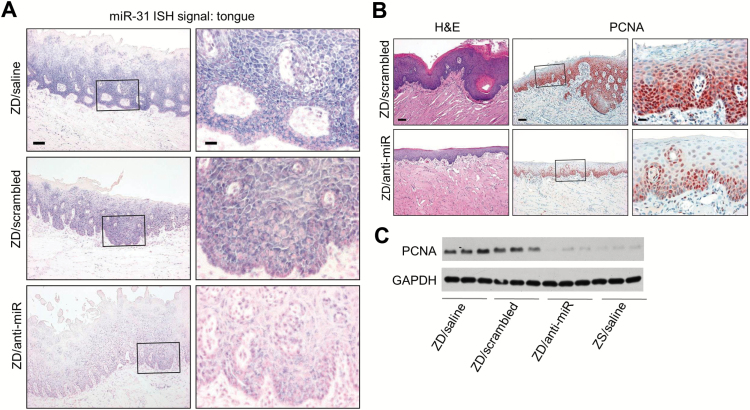Figure 2.
Anti-miR-31 effects on Zn-deficient (ZD) rat lingual preneoplasia. A) In situ hybridization (ISH) analysis of miR-31 expression. miR-31 signal (blue, 4-nitro-blue tetrazolium and 5-brom-4-chloro-3′-indolylphosphate) is moderate/infrequent in ZD/anti-miR tongue, but strong/abundant in hyperplastic ZD controls. Scale bars: left = 100 μm; right = 25 μm. Open rectangles are insets shown in panels to the right. B) Hematoxylin and eosin (H&E) staining showing a thinned ZD/anti-miR lingual epithelium vs hyperplastic ZD control tongue; immunohistochemical showing few PCNA-positive nuclei (red, 3-amino-9-ethylcarbazole substrate-chromogen) in thinned ZD/anti-miR tongue vs abundant PCNA-positive nuclei in proliferative ZD/scrambled control (H&E, scale bar = 100 μm. PCNA, scale bars: right = 100 μm; left = 25 μm). Open rectangles are insets shown in panels to the right. C) Immunoblot analysis shows reduced PCNA expression in tongue following systemic delivery of anti-miR-31. H&E = hematoxylin and eosin; ISH = in situ hybridization; ZD = Zn-deficient.

